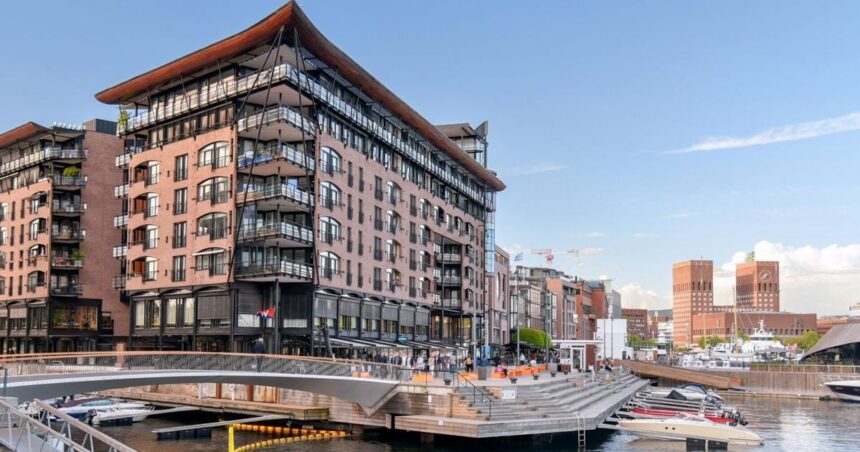During my recent trip to Oslo, I couldn’t help but notice the peaceful atmosphere that enveloped the city. It felt like a world away from the chaos and anxiety often portrayed in the news. I made some observations that stood out to me: Parents left their baby carriages parked on the sidewalk while they stepped into stores, an uncommon sight in the US. The city center was almost traffic-free, allowing the sounds of birds to be heard. Most cars on the road were electric, with Tesla being the best-selling car in Norway. To control traffic congestion, a “congestion fee” restricted most cars from entering the town center. In addition, a tunnel diverted traffic from the harborfront, reducing the flow of cars through the city.
My memories from childhood visits to Oslo were reminiscent of what I saw during this trip. A seasoned sailor stood on his boat at the harbor, trying to sell the last of the shrimp he had caught at sunrise before sunset. Across the boulevard, the old yellow train station had been transformed into the Nobel Peace Center, honoring a man who dedicated his wealth from inventing dynamite to promoting peace. Adjacent to the center, the brick City Hall, where the prize is awarded, showcased statues celebrating noble workers, overlooking the bustling harbor.
People are also reading…
A light mist covered the harborfront boardwalk, shimmering as if delighted to be the city’s dance floor. I watched as around a hundred Norwegians engaged in swing dancing to the tunes of a disc jockey under an umbrella, symbolizing a harmonious society. The dance moves were mostly American-style two-step to familiar tunes with Norwegian lyrics.
Each visit to Norway offers insights into their unique approach to governance. My Norwegian friends explained why they do not mind their high taxes, citing examples like “half tax month” in November when the government allows people to have extra money for the upcoming holidays.
Despite the challenges of the pandemic, the Nordic countries experienced a baby boom, attributed to strong social safety nets and tax incentives for new babies. Norway offers generous parental leave, allowing families up to 12 months off at 80 percent pay, with mandatory paternity leave for fathers. This supportive environment has led to an increase in birth rates, unlike many other countries that witnessed a decline.
Norway’s strict anti-smoking policies have significantly reduced tobacco use in public spaces. Bars, restaurants, cafes, and trains are now smoke-free, providing clean air for everyone. Traditional “brown cafés” have adapted, providing outdoor spaces for smokers and offering snuff as an alternative indoor nicotine option.
Oslo’s parks are popular gathering spots, where families enjoy barbecues using disposable grills and embrace nudity, particularly among children. The relaxed attitude towards nudity extends to public places, TV programming, and even school settings, highlighting cultural differences in societal norms.
Travel exposes me to diverse lifestyles and perspectives, reinforcing the idea that there are multiple ways to live life. This continuous exploration fuels my passion for traveling.
(Rick Steves (www.ricksteves.com) shares his experiences through European guidebooks, travel shows, and tours. This column reflects on his favorite destinations from the past two decades. Connect with Rick via email at rick@ricksteves.com and follow his blog on Facebook.)





